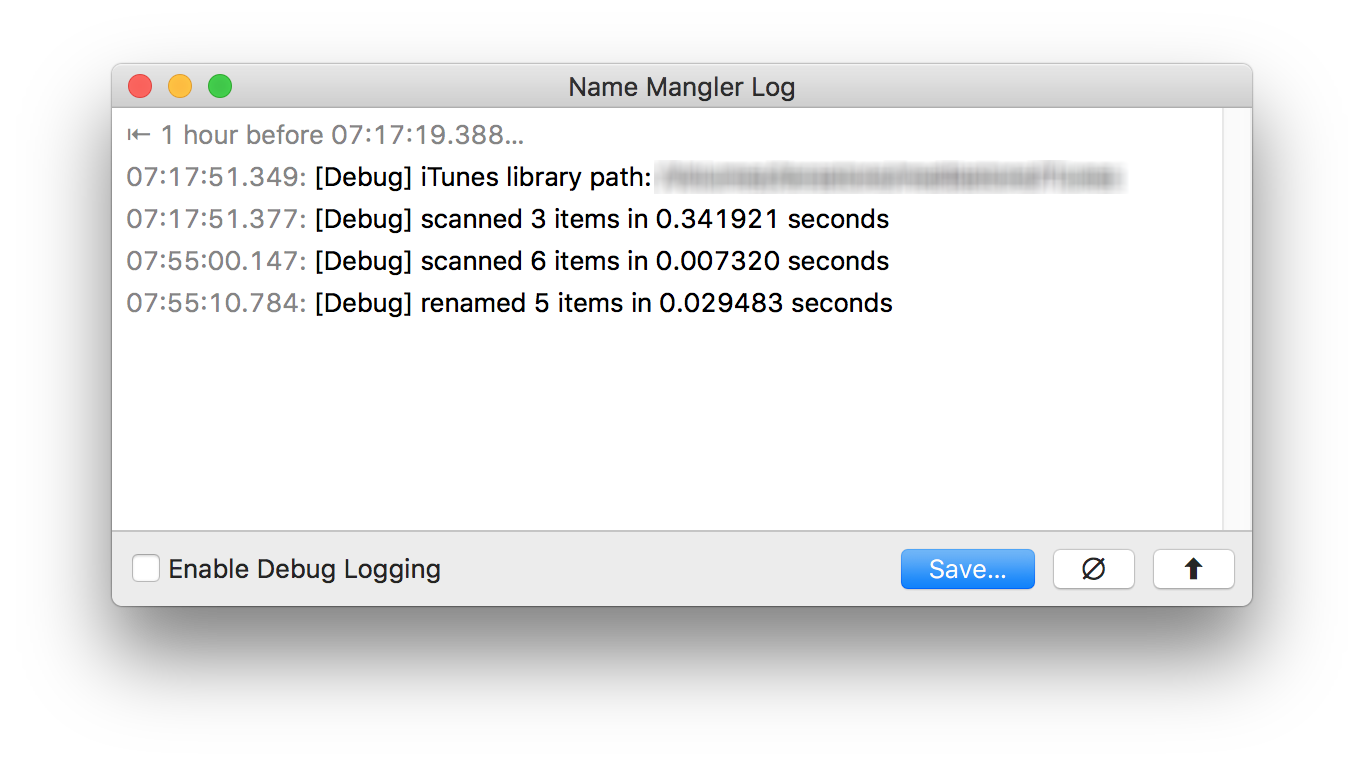Frequently Asked Question
We are in the process of adding a log viewer to all of our applications. This isn't something you'll need on a regular basis, but if you contact us for technical support, we may ask you to send us a log file—and with the built-in log viewer, doing so is much simpler than it used to be. This guide explains how to activate the log viewer in each of our apps, and then how to use it to view and send us your log data.
Note: The log viewer displays a view of the system log file, filtered based on which app you're using. When you save this output, there's some additional metadata included, such as the application's full path and process identifier. Note that none of this data is sent to us automatically—you have to save the output, then email it to us. We want you to be in control of the process.
Log Viewer Status as of April 9, 2018
We'll be adding the log viewer to each of our apps in their next minor update. As this is a brand-new feature, it's currently only available in the just-released Name Mangler 3.4.1 and Witch 4.2. We'll be updating this document as additional apps gain log viewer support.
Accessing the Log Viewer
In most of our apps, the method of reaching the log viewer is the same. (A couple have slight variations; they'll be documented here when the log viewer becomes available in those apps.)
The Hard Way
Hold down the Option key, then open the app's app menu (i.e. the Name Mangler entry in the menu bar when running Name Mangler). With the Option key held down, what would normally be the item for Preferences will read Log; select that, and the Log viewer will open.
The Easy Way
There's a hidden keyboard shortcut for the log viewer; press ⌘⌥, (Command-Option-Comma) to open the log viewer.
The following apps have non-standard methods of accessing the log viewer, due to their interface.
Witch 4
Open Witch's System Preferences panel, then hold down Control and Option and click on the question mark icon (help icon) in the lower right of any of Witch's tabs.
Using the Log Viewer
When the log viewer window opens, it will look like this, though it may be empty—by default, the viewer shows log messages received within the last hour, so if there hasn't been any activity in that time, it will be blank.

At the top of the window, the "back in time" interval is displayed, showing the default of one hour. Below that is where the log messages will appear—these messages update in real time, so you can open the log viewer, do whatever it is in the app that's causing problems, and see the log messages that are generated.
At the bottom of the window, there's a row of icons and text; here's what each of those items do…
Enable Debug Logging
Generally, you should leave this unchecked. When checked, our apps will send a ton of data to the log, which really isn't something you want to do. If we're working with you on an issue, though, and we need more detailed logging, we'll ask you to check this box, then re-do whatever task it is you're having an issue with. When done, remember to uncheck the box to turn off the detailed reporting to the console.
When you see [Debug] before the log messages—as in the above screenshot—those messages were generated by our debug logging tool. If you see them, and you're not actively working an issue with us, disable this feature.
Save…
If we ask you to send us a log file, you'll use this button to save the file to your hard drive. By default, the file will be named Log.plist. Once it's saved, please right click on the file in Finder and select Compress "Log.plist" from the contextual menu. This will turn the file into a zip archive, which you can then attach to an outgoing email to us. (You'll be told where to email the file as part of the support process.)
Alternatively, you can select all the text in the log viewer window, copy it, then paste it into a new email to us at an address we'll provide.
The Slashed Circle
Clicking this button will clear the log viewer window by setting the time interval it's searching to "now." In other words, it's not deleting anything, it's just setting the view to an interval in which there haven't yet been any log entries. To change the time interval, you need the next interface element…
The Up Arrow
Click the up arrow at the bottom right of the window to change how far back in time Name Mangler will search through the log file. Each click will change the end point, first to one day, then to seven days, then to 14 days, etc. There's really no limit as to how far back you can go, other than memory. However, each time you click the up arrow, it will take a while to retrieve the matching log messages—and the longer you go back in time, the longer it will take to display the messages.
In most cases, the messages we'll be interested in will be within the last hour or perhaps the last day, so you shouldn't need to change the interval very often.
When you're done with the log viewer, make sure the Enable Debug Logging box is not checked (unless we've specifically asked you to keep it checked), then close the window.
 Many Tricks
Many Tricks